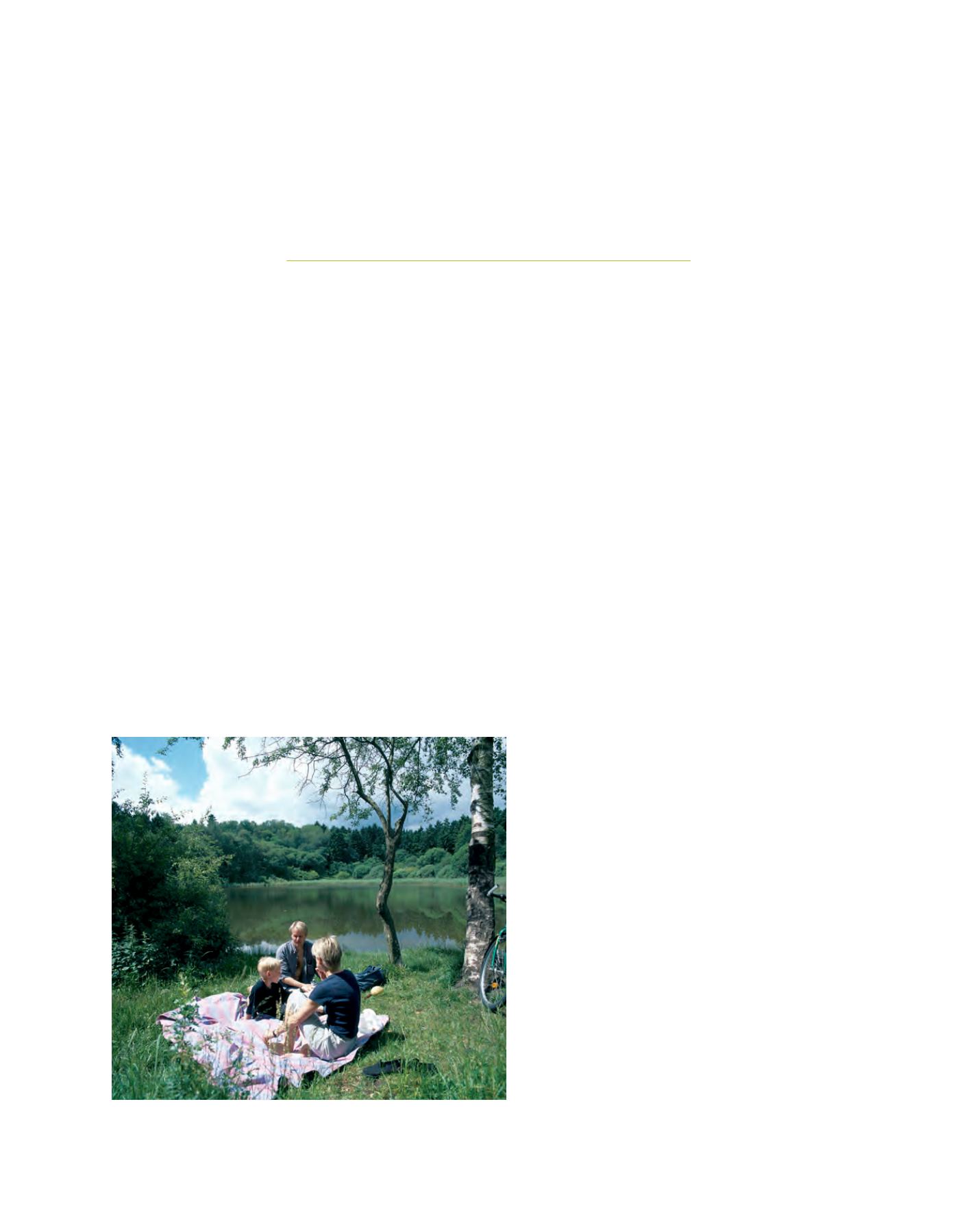

[
] 177
Forests and forestry in Denmark –
thousands of years of interaction
between man and nature
Christian Lundmark Jensen, Coordinator on International Forest Policy,
Nature Planning and Biodiversity, Danish Ministry of the Environment Nature Agency
L
ife can only be understood backwards; but it must be
lived forwards,” said the famous Danish philosopher
Søren Kierkegaard back in 1843. Another old adage
says: “He who does not know the past, does not understand the
present and can not see into the future”. Both sentiments should
fit well to the story about forests and man in Denmark.
Natural expansion of the forest
Although the oldest traces of trees date back to the age of Jura
some 150 to 180 million years ago, numerous ice ages subsequently
coming and going have frequently cleared the Danish landscape of
practically all types of vegetation.
Since the last ice age, which ended around 13,000 years ago, forest
trees have immigrated successively. The pattern has been traditional,
with various primarily light-demanding species coming in first (such
as birch, aspen and pine) followed by more shade-tolerant types, at first
dominated by hazel. Subsequently species like oak, elm, alder and lime
arrived – and at a later stage, some 3,000-4,000 years ago, also beech.
It is assumed that at the peak of its succession, forest
covered the vast majority of the country, perhaps up to
80 per cent or more.
Harmony, degradation and deforestation
Human beings took part in the development of forests
and landscapes from the beginning. They quickly
settled at the coasts and sustained their livelihoods
through fishing, hunting and the collection of mush-
rooms, berries and nuts. The utilization rate was not
high, however, and certainly no threat to the forest.
The influence of man picked up speed with the intro-
duction of agriculture, approximately 6,000 years ago.
Hunter-gatherers were gradually replaced by farmers,
who introduced animal husbandry and used axe and
fire to clear land for crops.
Gradually the increasing population and economic
development caused further pressure on the forests.
This was brutally interrupted around the year 1300,
when the Black Death (plague) raged throughout
Europe, and killed almost a third of Denmark’s popu-
lation. However, after the Black Death, the picture
changed again and the forest came under renewed
pressure. It was now used for an increasing number
of different purposes, providing nuts, berries, apples
and game, hay and grazing for horses and cattle, and
beech mast for the fattening of pigs. The timber was
used for house building, stables and ships, tools, clogs
and pools. In addition, and not least, wood was used for
energy – for heating, salt sizzling, baking of tiles and
melting of iron.
All of it contributed to overexploitation, degradation
and deforestation. A significant contributing factor
was the special arrangements for ownership and use
rights. The system gave ownership and use rights for
squires and lords of manor to the mature stands of
high-boled trees, whilst the use rights for the under-
brush were given to tenants. Although intending the
opposite (protection of high-boled stands), the system
instead encouraged usage patterns among the tenants
that rarely allowed any young trees to fully develop
into maturity. Extensive grazing and coppice methods
prevented the forest from regenerating itself.
“
Danish forests are highly appreciated for outdoor life and recreation. Here, a family is
having a picnic lunch after a bicycle ride in the public forest Poulstrup
Image: ©Bert Wiklund
















